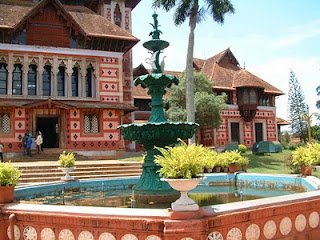Kerala Science and Technology Museum Thiruvananthapuram, Kerala
History
Kerala Science and Technology Museum was established in the year 1984.
Located in Thiruvananthapuram/Trivandrum, the capital city of Kerala,
the museum is run by an autonomous body, which was setup by the
Government of Kerala. The museum remains a dynamic medium for the spread
of science and technology in Kerala. Kerala Science and Technology
Museum also remains a pioneer in inculcating the sense of curiosity and
scientific disposition among the young generation in the state. The Government of Kerala always wanted a body which could organize fairs
and scientific exhibitions. They got the answers to their questions in
the form of Kerala Science and Technology Museum. The museum also
undertakes the responsibility of managing science educational programmes
through TV, Radio and other media of communication. The museum is also
responsible for organizing demonstrations and lectures, which includes
the interactions with media and public too.
Kerala Science and Technology Museum is visited by people of all ages
and interest, as this is a place of study as well as a recreational
center. Here, children can have some creative fun, while the adults
interested in science and technology can also enjoy their time here by
learning new things. When the project was started, the measurements of
the place came down to 5 acres of land at the mid of the capital city of
the state of Kerala. The museum compound was set up in 1984 with just a
few sections, namely Electricity, Electronics, Power & Motion and
Mechanics, with approximately 300 exhibits. A number of galleries like
Popular Science, Mathematics, Automobile and Biomedical Engineering were
added to the museum with time.
Kerala Science and Technology Museum also holds a planetarium called the
‘Priyadarshini Planetarium’. The planetarium was made functional in the
year 1994. Further developments took place, which gave rise to a
Children's Science Park and Mobile Science Exhibition unit. Later, other
galleries were added too to this place, including Computer Gallery and
Solar Energy Gallery. Kerala Science and Technology Museum premise also
contains a Play Park with thirteen playing devices which aid learning
while playing. This park was opened in the year 2005. Energy Park, 3D
Theatre, Digital Weighing Machine, Edusat Talk Back Terminal, and Energy
Ball etc are hot favorites of the crowd visiting Kerala Science and
Technology Museum.













